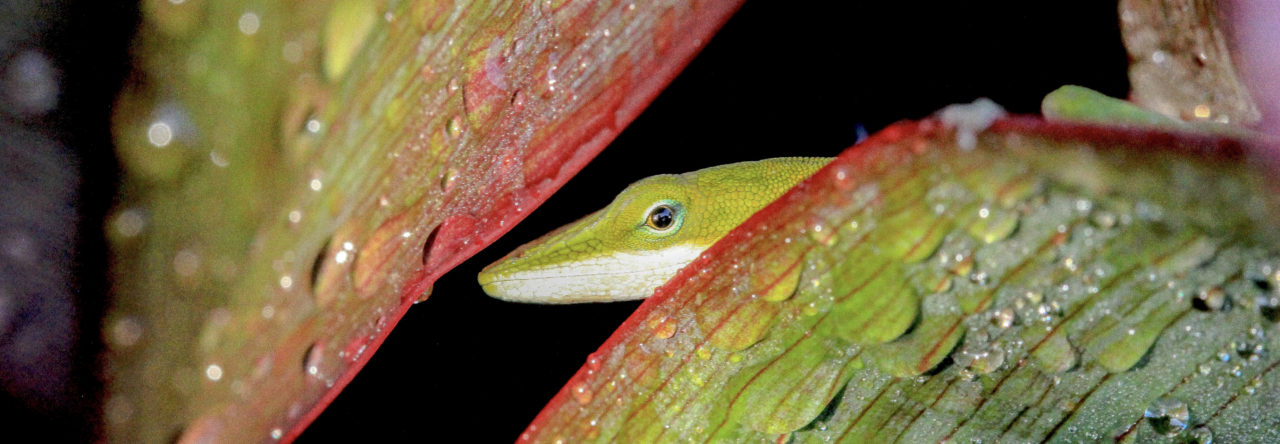The Anolis Gene Nomenclature Committee (AGNC) recently held an open discussion regarding our ongoing efforts to develop Anolis as a model system for integrative biology* and genomics at SICB 2012 in Charlestown, SC. To facilitate further discussion from the community I wanted to post a summary of this meeting here. If anyone would like to add to this discussion or propose additional objectives or concerns please leave your comments below. This is an exciting and fast-paced time for Anolis biologists and discussions such as this are necessary to continue the productive development of this genus for research in a post-genomic era.
The AGNC was formed to efficiently develop resources that will be useful to the Anolis research community. We opened the meeting with short presentations about our ongoing resource development efforts. Carlos Infante (UGA) described work from the Menke Lab to develop cell culture protocols that will be used to test transgenic constructs directly in anole tissues rather than distantly related model systems such as the mouse or chicken. He noted that they recently had promising results testing the piggyBac transposon system in cultured anole fibroblasts. Building on her poster presentation Jeanne Wilson-Rawls (ASU) described her experiences isolating and culturing satellite cells – small stem cells found in mature muscles – and her ongoing collaboration with Kenro Kusumi (ASU) studying the mechanisms of tail regeneration in A. carolinensis. Dr. Kusumi described a relatively new project aimed at obtaining genome and transcriptome sequences for A. apletophallus from Panama as part of a collaboration with the Smithsonian Tropical Research Institute (also see this abstract from E. Hutchins). Dr. Kusumi also reminded the audience of their recent release of additional transcriptome data for mid-stage A. carolinensis embryos (available through NCBI).
One of the AGNC objectives is to aid in the dissemination of laboratory protocols, genomic data, and to create a pipeline for integrating data from multiple populations and species (see below). Several web-based resources are now being created along these lines. Tonia Hsieh and Rob Kulathinal (Temple Univ.) concluded this introduction by describing their efforts to develop Lizardbase, a web portal for geographic and genomic data mining. While still in its development phase the portal promises to become a useful tool for the anole research community and its public outreach efforts as data is added. To build this database Drs. Hsieh and Kulathinal are soliciting geo-tagged data for this portal and are in the process of adding a searchable database of contributors.
Looking forward – Goals for 2012
















